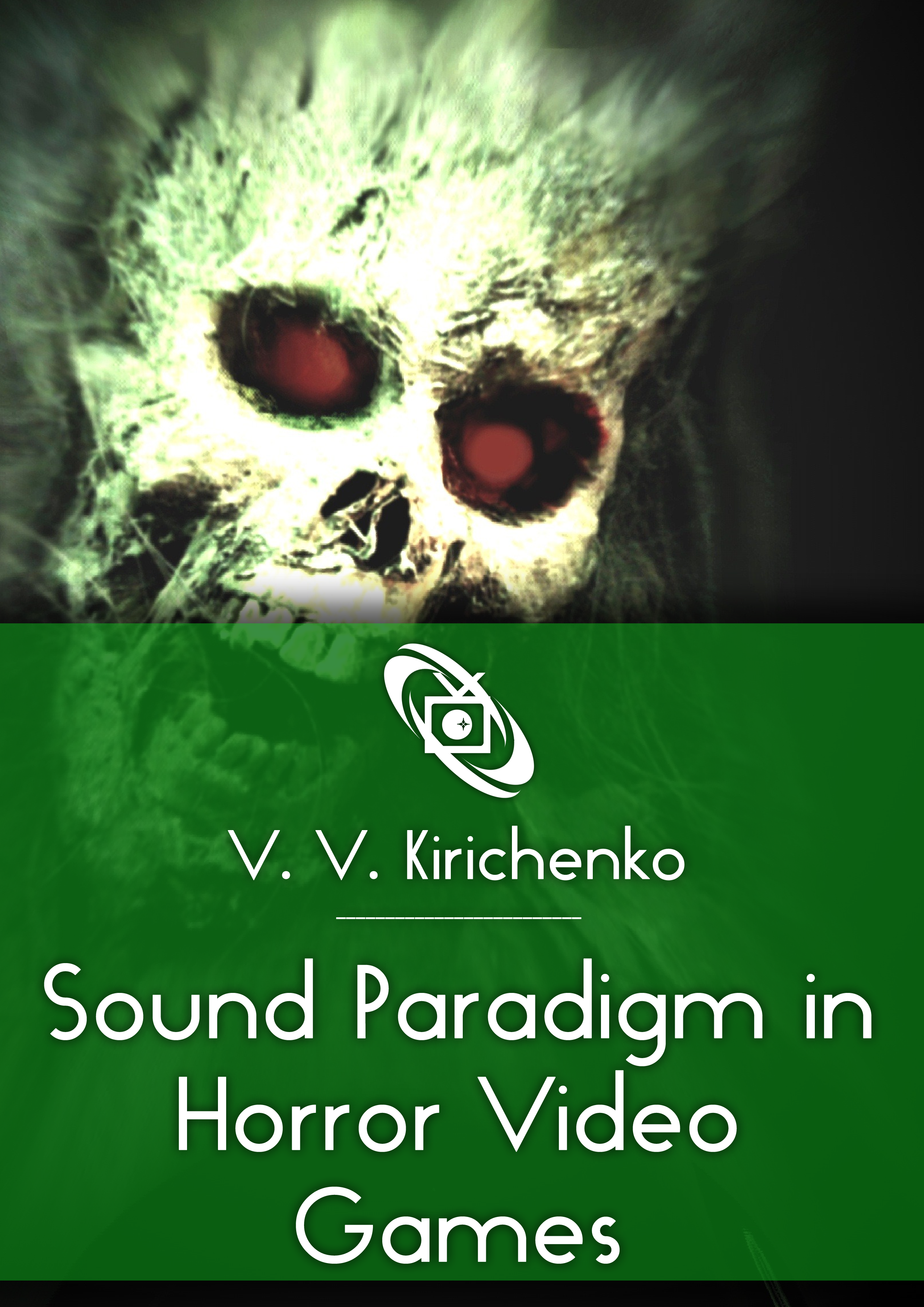Abstract
The current work is devoted to the analysis of the sound paradigm in video games of the horror genre. The sound in computer games is an important component, since the game is a syncretic medium. The aim of the work is an attempt to establish the most relevant typology of sound elements of a given genre, as well as the correlation of the considered paradigm with various game interfaces. Understanding the functioning of sound and its relationship with various interface forms in computer games makes it possible to better comprehend their cultural significance, to better see their relationship with other media, as well as their impact on the playing subject. The article offers an analysis of the most popular and canonical elements of the video game audio paradigm. The author of the article defines the game sound, indicates its functions (semantic, immersive, gameplay), considers the concept of “diegesis” in the context of the game sound, describes the emergence and characteristics of the horror genre in computer games, taking into account various forms of interfaces, and also constructs the paradigm of sounds in accordance with typology of interfaces. As a result, the author comes to the conclusion about the variety of canonical sound elements of the horror genre, each of which has a different effect on the player experience and structures the game.
References
Aarseth, E. (1997). Cybertext: Perspectives on Ergodic Literature. London; Johns Hopkins University Press.
Chion M. (1994). Audio-Vision: Sound on Screen. New-York: Columbia University Press.
Chion, M. (2016). Sound: An Acoulogical Treatise. Durham, London: Duke University Press.
Denikin, А. А. (2012b). Of Sound in Videogames. Mediamusic. (1). Retrieved from http://mediamusic-journal.com/Issues/1_4.html.
Denikin, А. А. (2012а). Sound Design in Cinema and Multimedia. Moscow: DMK Press. (in Russian)
Denikin, А. А. (2013). Model of Diegetic analysis of sound in display media. Mediamusic. (2). Retrieved from http://mediamusic-journal.com/Issues/2_5.html. (in Russian)
Donovan, Т. (2014). Replay: The History of Video Games. Мoscow: Beloe Yabloko. (in Russian)
English Oxford Living Dictionaries. (2019). Horror. Retrieved from https://en.oxforddictionaries.com/definition/horror.
Eskelinen, M. (2012). Cybertext Poetics. The Critical Landscape of New Media Literary Theory. London, New-York: The Continuum International Publishing Group.
Freud, S. (1995). Uncanny. In The Artist and The Fantasy (pp. 265-281). Moscow: Respublika.
Genvo, S., Pignier, N. (2011). Comprendre les fonctions ludiques du son dans les jeux vidéo. Communication, 28. Retrieved from https://journals.openedition.org/communication/1845?lang=en#quotation. DOI: 10.4000/communication.1845
Grimshaw, M. (2011). Game Sound Technology and Player Interaction: Concepts and Developments. New-York: IGI Global.
Jorgensen, K. (2013). Gameworld Interfaces. Cambridge: The MIT Press.
Juul, J. (2003). Half-Real – Video Games Between Real Rules and Fictional Worlds. Copenhagen: IT University of Copenhagen.
Kirichenko, V. V. (2019). Multilinguality of Computer Game: On Gameplay Function of Sound. Mezhdunarodnyy zhurnal issledovaniy kul'tury. 1 (34). 102-112.
Kohler, C. (2007). Interview: “Silent Hill” Sound Designer Akira Yamaoka. Retrieved from https://www.wired.com/2007/10/interview-silen/.
Krzywinska, T. (2015). The Gamification of Gothic Coordinates in Videogames. Revenant, 1(1), 58–78.
Lastra, J. (2000). Sound Theory. “Fidelity Versus Intelligibility” // Sound Technology and American Cinema: Perception, Representation, Modernity. New York: Columbia University Press. 138-143.
Lenkevich, A. S. & Lapytova, A. R. (2015). Interface as an object of reflection. Vestnik LGU im. A.S. Pushkina. 2. 181-190. (in Russian)
Murray Schafer, R. (1993) The Soundscape: Our Sonic Environment and the Tuning of the World. Rochester: Destiny Books.
Perron, B. (2009). Horror Video Games: Essays on the Fusion of Fear and Play. Jefferson: McFarland.
Perron, B. (2018). The World of Scary Video Games: A Study in Videoludic Horror (Approaches to Digital Game Studies). Bloomsbury: Bloomsbury Academic.
Pinch, T. & Bijsterveld, K. (2012). The Oxford Handbook of Sound Studies. Oxford: Oxford University Press.
Sterne, J. (2003). The Audible Past: Cultural Origins of Sound Reproduction. Durham: Duke University Press Books.
Szczepaniak, J. (2014). The Untold History of Japanese Game Developers: Gold Edition. SMG Szczepaniak.
Whalen, Z. (2004). Play Along – An Approach to Videogame Music. Retrieved from http://www.gamestudies.org/0401/whalen/.

This work is licensed under a Creative Commons Attribution-NonCommercial-NoDerivatives 4.0 International License.

